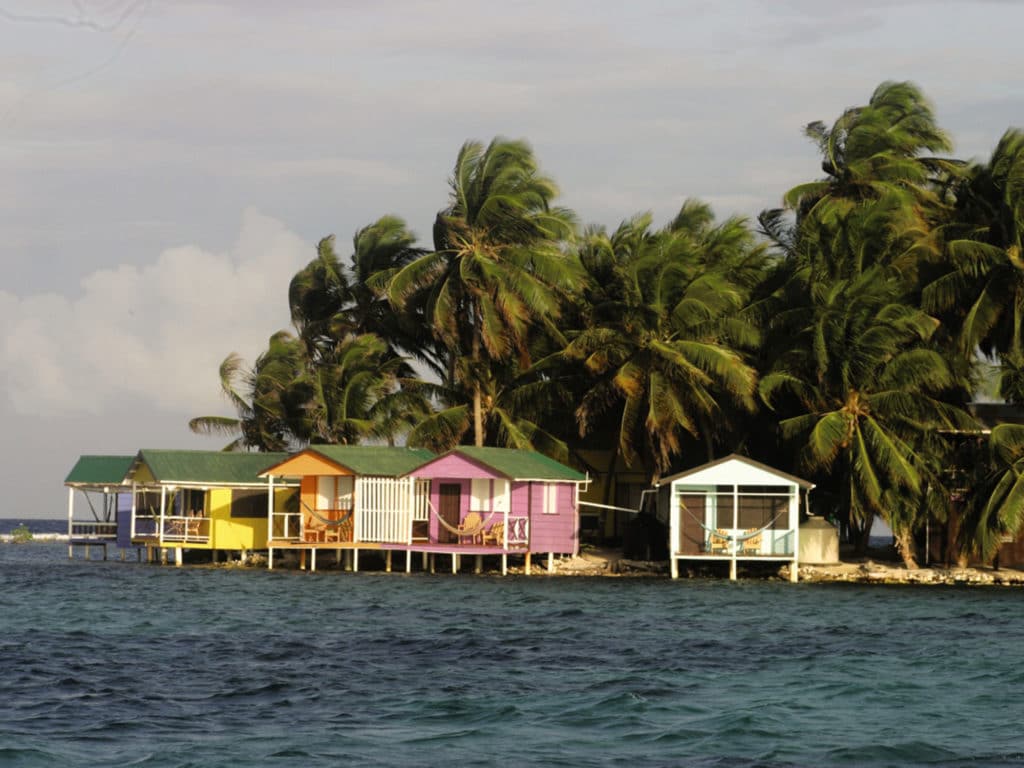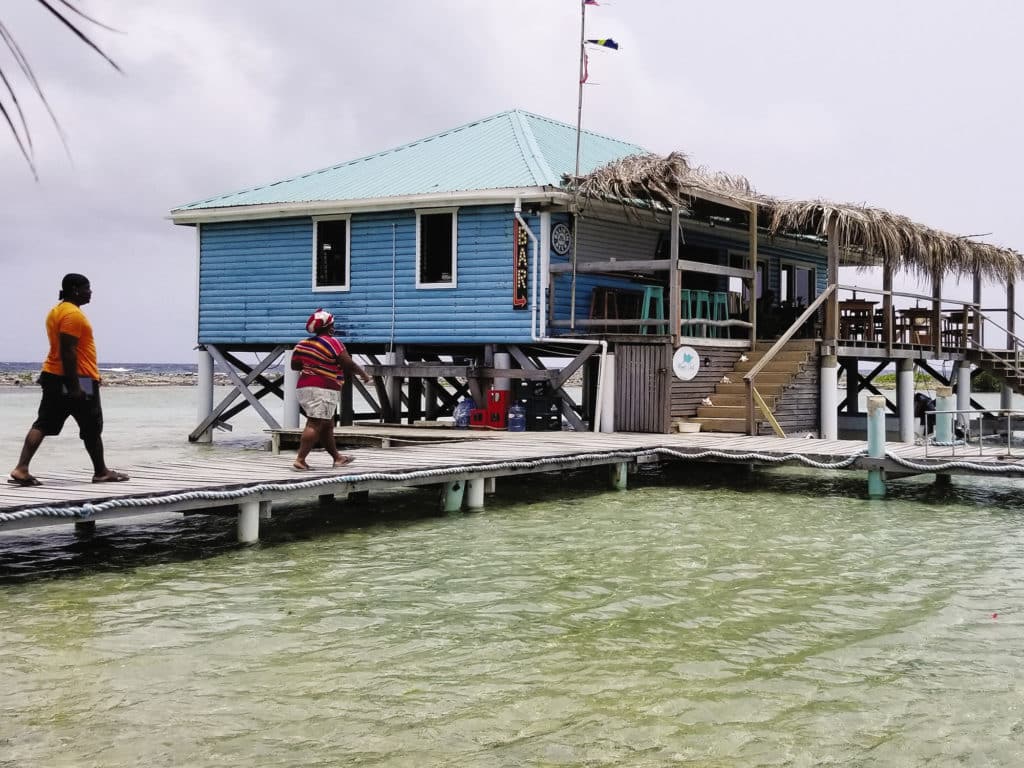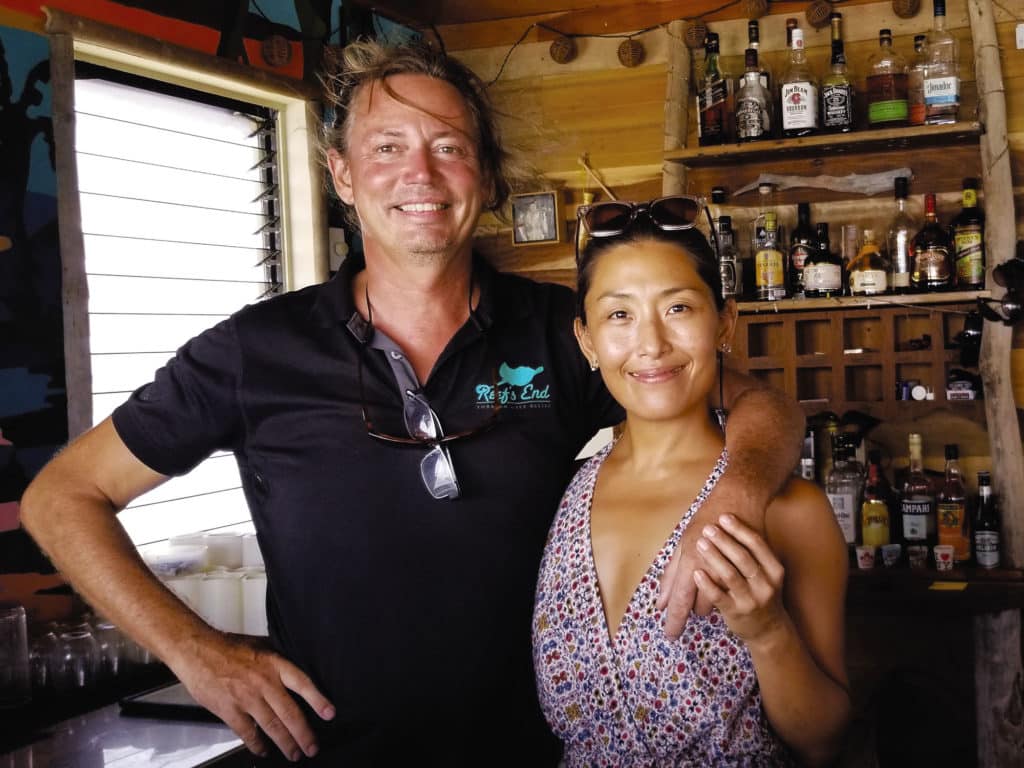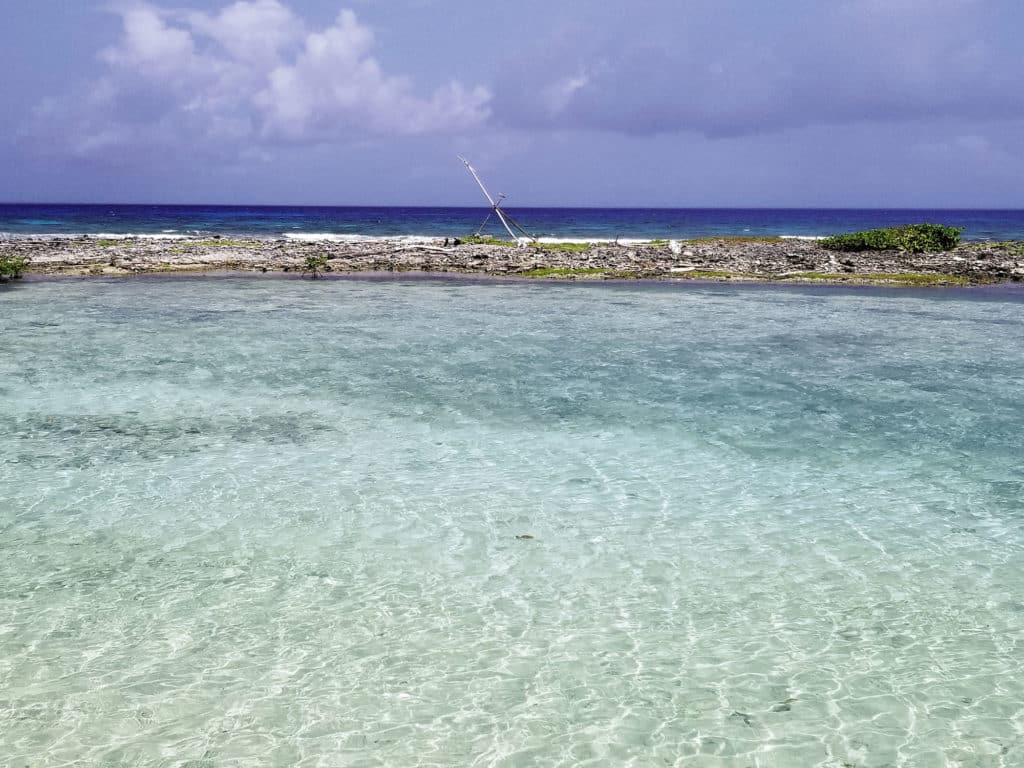
Cruising from island to island inside the world’s second-largest barrier reef, off the coast of Belize, is pretty darn sweet. The easterly trade winds blow steadily while the reef keeps wave heights to a minimum. There are dozens of islands to explore, but Tobacco Caye is the sweetest of all. This 4-acre caye (pronounced “key”) of coconut palms and brightly colored dwellings, perched in crystal-clear water on the tip of a southern section of reef, packs a lot of personality. The friendly, enthusiastic residents give the island a special vibe that keeps us coming back.
On our recent visit, after we anchored our Morgan 38, Mary T, in a sandy patch off the northwest tip of the island (16° 54′ 02″ N, 88° 03′ 78″ W), my husband, Kenny, and I hopped into the dinghy and headed over to the Reef’s End Lodge restaurant, a major hub of activity at the southern tip of the island. Guests of the lodge, cruisers, fishermen and groups of snorkelers converge at the docks. We snorkeled from the dock to explore the reef, and then returned for a meal in our wet, salty bathing suits. The conch ceviche and conch fritters were the tenderest I’d ever eaten. Dane, the Belizean chef, told me: “I just love to cook. It’s my passion, especially desserts.” All their cocktails are made with natural ingredients. The piña colada with fresh coconut milk and their Painkiller are my favorites. While we sipped on cocktails, stingrays glided through the shallows below, and frigate birds with 8-foot wingspans circled just above the roof in hopes of a handout.

Pär, the Swedish owner of Reef’s End, couldn’t be friendlier. On top of running the lodge, he manages a dive operation with guided tours of the reef and outer atolls. Like everyone on the island, he always has time to chat. He said he searched on three continents for a tropical paradise where he could live out his dream before stumbling upon Tobacco Caye. He knew almost immediately that it was the right place. “The island just has a good vibe,” he said. “There are no boundaries. You can walk through everyone’s yard. Everyone basically gets along, and we all help out one another.”
RELATED: Belize: The Other Caribbean
Pär’s American partner, Lily, gave me some of her delicious coconut ice cream with chocolate chips and then offered to pick up groceries for us on the mainland. They make regular runs in fast launches and are happy to pick up food or medicines for cruisers. When they acquire their watermaker, it will be made available to cruisers, which is great because there are few venues for fresh water in Belize.

On the other side of the island is the nonprofit Tobacco Caye Marine Station, dedicated to educating people about the reef. It works with groups of students who come for one to 10 days to learn about the ecosystem and biodiversity of the marine environment. The young British couple in charge, James and Zara, couldn’t have been more enthusiastic about their jobs and the island. Their Belizean snorkel guide, Dylan, truly sparkled as she waxed about Tobacco Caye and “her reef.” She had visited the island as a little kid and was thrilled to get a job on the caye.
The friendly, enthusiastic residents of Belize’s Tobacco Caye give the island a special vibe that keeps us coming back.
At the Sunset Bar, another busy hub, I spent time chatting with Kirk the bartender. He is quite the mixologist and makes a plethora of colorful cocktails with catchy names like Hurricane Kirk (watch out!) and Fouled Anchor. His recipe book, Kirk’s Belizean Island Drinks, is for sale at the bar and on Amazon. “It gets five stars,” he told me. Kirk used to tend bar in clubs in Belize City, but he says he much prefers Tobacco’s laid-back feel, which makes sense given his easygoing, gentle manner.

I asked Kirk which resident had been on the island the longest, and he suggested I talk to Colin Bradley, whose family owns the Windward Lodge.
The Bradleys have been on the island for over 100 years. I asked Colin how the island got its name. “There are two explanations,” he said. “The first one is that the British colonists tried to grow tobacco here. The other, more-likely explanation is that the British used this as a trading post for tobacco.” He told me that in his grandparents’ day, there was a church and a school on the island, and that most of the residents were fishermen. Now there are about 25 part-time residents working in the hospitality industry, and only a handful of fishermen and boat captains who live on the caye year-round. I spoke to one fisherman who said he catches just enough fish to eat and a few to sell to the Windward Lodge. “I’m not trying to get rich,” he added.
The island still attracts many Belizeans on weekends and holidays, in addition to the international crowd. Even though visitors outnumber residents, Tobacco Caye hasn’t lost its authenticity. It still feels real.
Amy Flannery and her husband, Ken Kurlychek, are currently hunkered down in Roatan, Honduras, and awaiting the “all clear” to sail Mary T home to Chesapeake Bay.








